Ginger (Zingiber officinale) is an herbaceous flowering plant that belongs to the family Zingiberaceae. Organic Ginger farming is a sustainable agricultural practice that cultivates Ginger without the use of synthetic chemicals or pesticides. It involves nurturing the Ginger plants using natural and environmentally friendly methods to ensure high-quality yields.

Benefits of Growing Ginger Organically
Organic Ginger farming involves cultivating this root crop without the use of synthetic chemicals or pesticides. The advantage is that organic Ginger cultivation promotes environmental sustainability by avoiding synthetic chemicals and pesticides. This helps maintain biodiversity, ensuring a more natural growing process. In addition, choosing organic Ginger means supporting local farmers who prioritize ethical farming practices and care for the well-being of their crops and surrounding ecosystems.
By opting for organic Ginger, you are not just getting a high-quality product; you are also contributing to a sustainable food system overall. Furthermore, organically grown Ginger tends to have higher nutritional value compared to conventionally grown Ginger. This means consumers can enjoy a healthier product with potentially greater flavor and medicinal properties.
Selecting the Right Ginger Variety
There are several popular varieties of Ginger that you can select from based on specific needs and location. Some popular Ginger varieties include Maran, Nadia, Rio de Janeiro, and Mahima. Each Ginger variety has its unique characteristics in terms of flavor profile, size, and growth requirements. One common variety is Yellow Ginger, known for its strong flavor and medicinal properties.
In case you missed it: Ginger Fertilizer Requirements and Recommendations: A Step-By-Step Guide
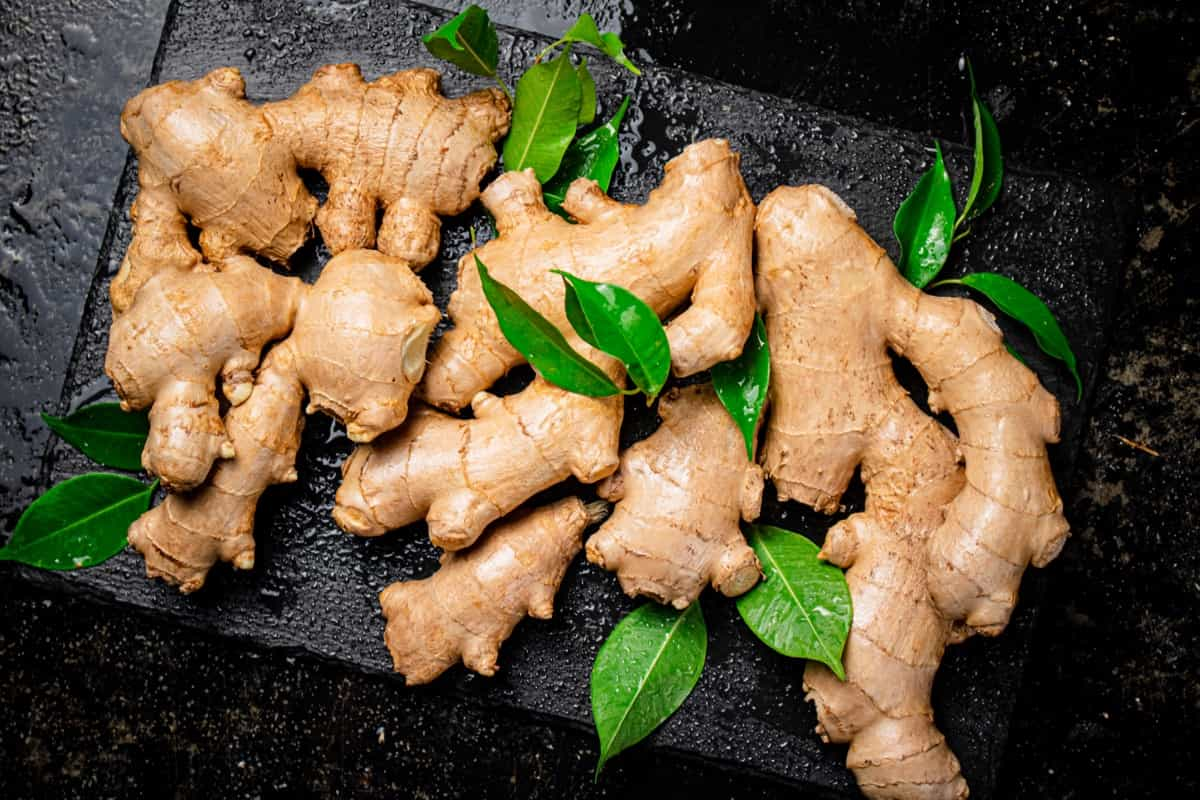
Another popular choice is White Ginger, which is milder in taste and commonly used in cooking. The Blue-Ring Ginger variety stands out with its unique blue rings on the rhizomes. For those looking for a more pungent option, the Black Ginger variety might be the best fit. When deciding on the right Ginger variety for your organic farm, consider factors like climate conditions, soil type, and market demand.
Climate and Soil Requirements for Ginger
Ginger thrives in warm and humid conditions, making it ideal for tropical and subtropical regions. Ginger plants prefer soil rich in organic matter with a pH level between 6.0 and 8.0. Sandy loam or loamy soil types are perfect for Ginger cultivation, as they allow proper root development and prevent waterlogging.
Ensure your Ginger farm receives ample sunlight of around 4-5 hours daily while also providing partial shade to protect the Ginger plants from extreme heat during peak hours. Water the Ginger plant regularly to maintain consistent moisture levels in the soil but avoid water stagnation, which can lead to the rotting of rhizomes.
Preparing the Soil for Organic Ginger
Ginger thrives in loose, well-draining soil with plenty of organic matter. Start by clearing the land from any weeds or debris that may hinder growth. Next, ensure the soil is rich in nutrients by incorporating compost or well-rotted manure. This will provide essential nutrients for your Ginger plants to flourish. Remember to conduct a soil test to determine any deficiencies and adjust accordingly.
To improve aeration, you can add sand or perlite to the soil mixture. Mix everything thoroughly to create a uniform blend before planting your Ginger rhizomes. Clear any weeds or debris from the planting region to reduce competition for nutrients and water – giving your Ginger plants the best chance to flourish. Break up clumps of soil and create raised beds if needed for better drainage.
Organic Propagation Methods
The common method is through rhizome division. This involves carefully separating sections of the Ginger rhizome with buds or eyes to plant in the soil. Another organic propagation technique is tissue culture, in which small pieces of Ginger tissue are used to grow new plants under controlled conditions. Some farmers also opt for seed propagation, although this method may take longer and require specific environmental conditions for successful germination.
In case you missed it: Ginger Farming Business Plan: A Guide to Production and Cultivation for Beginners
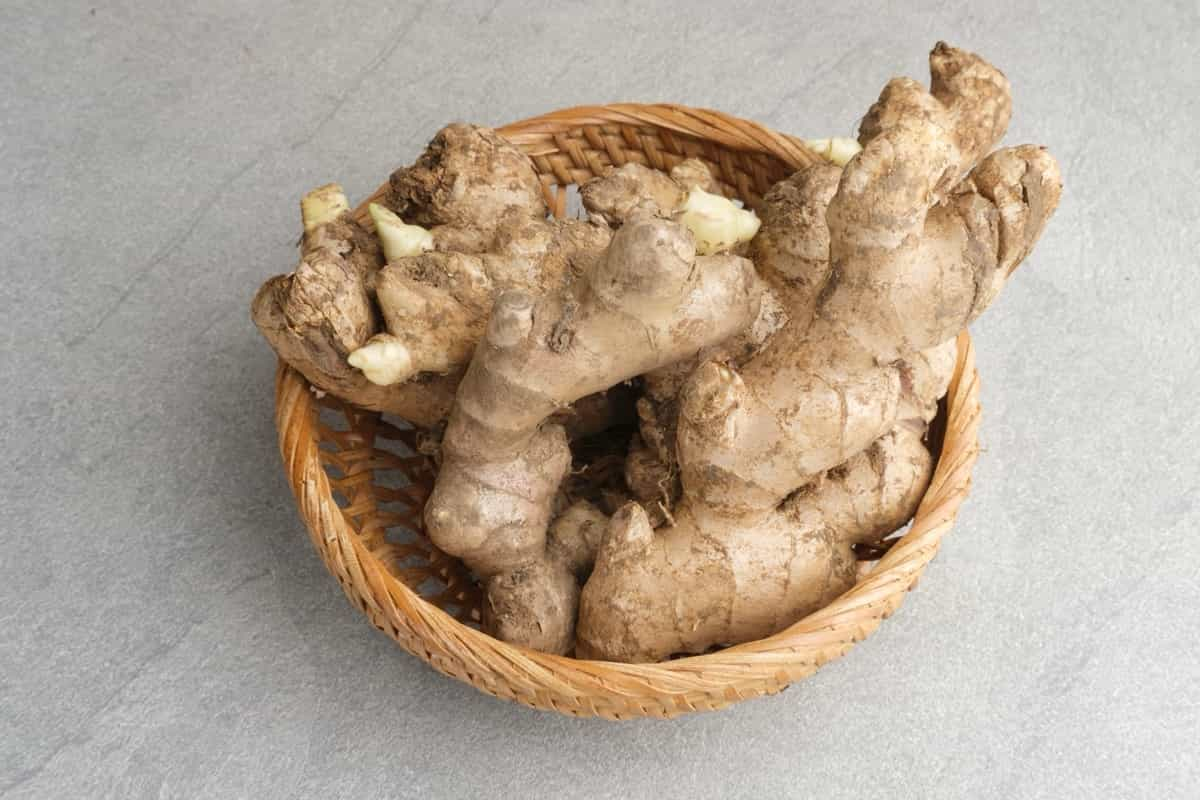
Planting Techniques for Ginger
Start by selecting healthy Ginger rhizomes from a reputable source. Look for firm, plump rhizomes with plenty of buds or “eyes” for sprouting. Before planting Ginger, it’s important to prepare the soil properly. Ginger thrives in well-draining soil rich in organic matter. Avoid waterlogged conditions to prevent rotting.
Plant the Ginger rhizomes shallowly, about 2 inches deep, and space rhizomes at least 8 inches apart to allow room for growth. Ensure the planted rhizomes receive adequate sunlight and regular watering without over-saturating the soil. As the Ginger plants grow, mulch around them to retain moisture and suppress weed growth. Regularly check for pests and diseases to address any issues promptly.
Organic Fertilization Practices
Organic fertilizers are natural sources like compost, manure, and organic matter. These fertilizers help replenish essential nutrients in the soil without harming the environment or compromising the quality of the produce. They improve soil structure, increase water retention capacity, and promote beneficial microbial activity. Organic fertilization practices involve applying compost or well-rotted manure to the soil before planting Ginger rhizomes.
This provides a slow release of nutrients throughout the growing season, feeding the plants gradually. Additionally, organic farmers can use organic liquid fertilizers made from seaweed or fish emulsion to provide an extra boost of nutrients during key growth stages. By adopting sustainable fertilization practices, organic Ginger farmers can ensure long-term soil productivity while producing high-quality Ginger crops for consumers.
Irrigation Strategies for Ginger
Ginger plants require consistent moisture levels to thrive and develop those flavorful rhizomes. The effective irrigation strategy for Ginger is drip irrigation, which means it delivers water to the root zone, ensuring efficient water usage. This method helps prevent diseases caused by excess moisture on the leaves. Mulching around Ginger plants can also help retain soil moisture and reduce evaporation rates. Organic mulches like straw or compost not only conserve water but also improve soil structure over time.
In case you missed it: Pest Control Cost Per Acre in India: Organic vs Chemical Cost Comparison
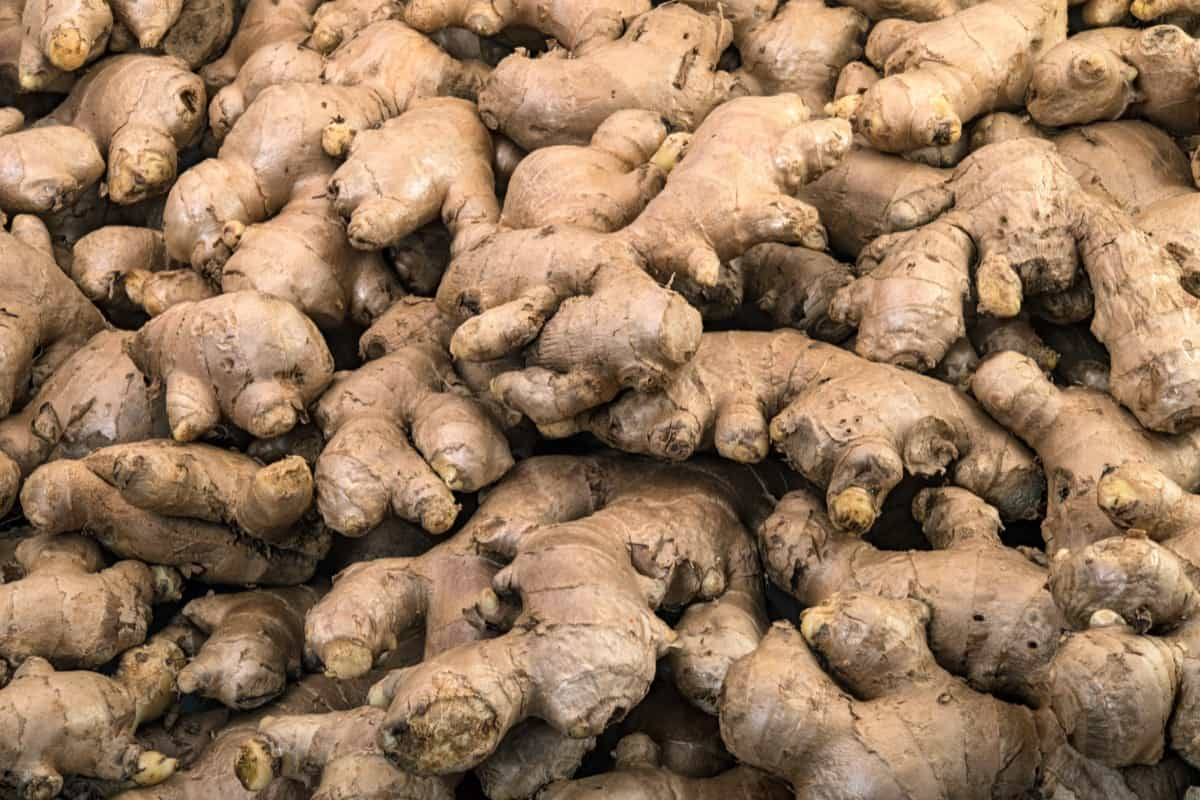
Monitoring soil moisture levels regularly is essential in determining when and how much to water your Ginger crop. Avoid overwatering the Ginger plant as it can lead to root rot, while underwatering can stunt growth and reduce yields. By implementing these smart irrigation strategies, you’ll be well on your way to growing healthy, robust organic Ginger crops that will impress even the most discerning taste buds.
Managing Weeds Organically
It is crucial in maintaining the health and productivity of your Ginger crop. Weeds compete with Ginger plants for nutrients, water, and sunlight, inhibiting their growth. To control weeds naturally, consider using mulch to suppress weed growth while retaining soil moisture. Hand weeding is another effective method to remove weeds without the use of synthetic chemicals. Regularly inspect your Ginger field and manually pull out any unwanted plant growth.
This not only prevents competition but also allows for better aeration around the Ginger roots. Crop rotation can manage weeds by disrupting their lifecycle. Planting cover crops like legumes can smother weed seeds and add nitrogen back into the soil naturally. Additionally, practicing proper spacing between Ginger plants promotes healthy growth while minimizing weed infestation.
Organic Pest Control Measures
Some common pests that can damage your Ginger crop include aphids, spider mites, and root-knot nematodes. Aphids cause yellowing and distortion of leaves. Spider mites are arachnids that suck plant juices, leading to webbing and stippling on the leaves. Root-knot nematodes are microscopic worms that infect the roots, causing stunted growth and wilting. To combat these pests organically, you can introduce beneficial insects to prey on aphids and mites.
Additionally, using neem oil spray can help deter pests while being gentle on the environment. Crop rotation practices also play a vital role in preventing nematode infestations by disrupting their life cycle. By implementing organic pest control measures effectively, you can protect your Ginger crop naturally without relying on harmful chemicals that may harm beneficial organisms in the ecosystem.
Disease Management in Organic Ginger
Several diseases can affect Ginger crops, potentially impacting the yield and quality of the harvest. One common disease is bacterial wilt, which causes wilting and yellowing of leaves. Another threat is fusarium wilt, leading to stunted growth and yellowing leaves as well. Rhizome rot can also pose a risk, causing decay in the Ginger roots. To combat these diseases organically, farmers can implement cultural practices such as crop rotation and ensuring proper drainage to prevent waterlogging. Using disease-resistant Ginger varieties can also help mitigate risks.
In case you missed it: Weed Management in Onion Farms: Control with Organic, Mechanical, Biological, and Herbicides
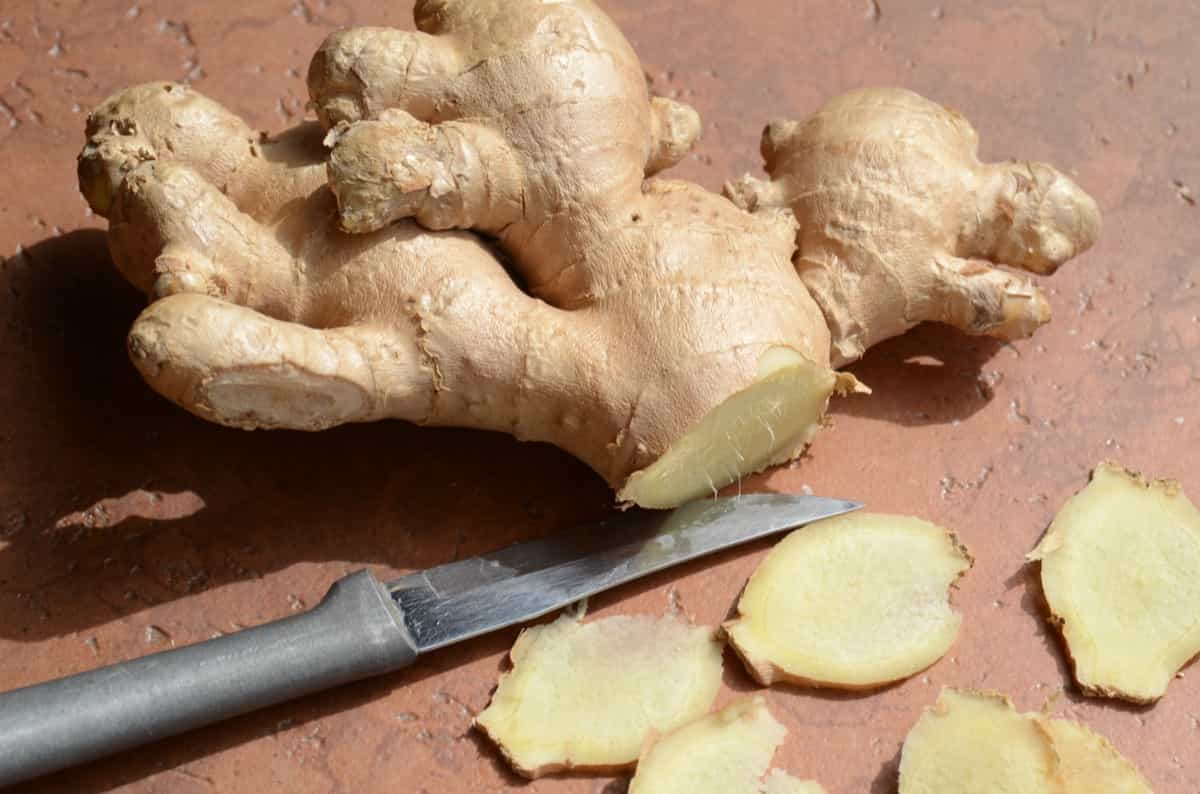
Regular monitoring of the Ginger crop for disease signs is important for detection and prompt action. Neem oil, garlic spray, or homemade botanical insecticides are eco-friendly options for managing pests organically. Implementing good sanitation practices by removing plant debris promptly can also prevent the spread of diseases. By promoting biodiversity on your farm through companion planting and maintaining healthy soil, you create a balanced ecosystem that naturally resists pests and diseases while supporting overall plant health.
Harvesting Your Ginger Crop
When it comes to harvesting Ginger, timing is crucial. The best time to harvest is when the Ginger leaves turn yellow and dry out. To harvest your Ginger, gently loosen the soil around the plant base with a spade or fork. Be careful not to damage the rhizomes as you dig them up. Once unearthed, carefully remove excess soil from the roots before washing them thoroughly under running water.
After harvesting, allow your freshly dug Ginger rhizomes to air-dry in a shaded area for a few days. This helps cure them and improve their flavor profile. Once dried, trim off any remaining roots and foliage before storing them in a dry place. Remember, proper handling and storage are key to preserving the quality of your organic Ginger crop until it reaches consumers’ tables.
Post-Harvest Processing and Storage
After months of hard work and dedication, it’s time to reap the rewards of your organic Ginger farming efforts through post-harvest processing and storage. Once the Ginger rhizomes are harvested, it’s crucial to handle rhizomes with care to maintain their quality and maximize shelf life. Curing is an essential step in post-harvest handling techniques for Ginger. Place the cleaned rhizomes in a well-ventilated area with low humidity for about a week or until they are fully dried.
Once dried, trim off any remaining roots or foliage before storing your Ginger in a cool, dark place. Proper Ginger storage conditions help extend the shelf life of your organic Ginger so you can enjoy its freshness for longer periods. Start by washing the Ginger rhizomes thoroughly to remove dirt or debris. Then, allow them to dry naturally before proceeding to the next step. Sorting is an essential part of the process; separate healthy rhizomes from damaged ones to prevent spoilage during storage.
Proper storage is important to preserving the freshness of your organic Ginger. Store the rhizomes in a cool and well-ventilated place away from direct sunlight. Consider using wooden crates or mesh bags for optimal air circulation. Regularly inspect stored Ginger for any signs of decay or mold. Remove any affected rhizomes immediately to prevent further contamination.
Marketing Organic Ginger
The effective way is to tap into the growing demand for organic products by selling directly to local markets, health food stores, or even through online platforms. Creating a strong brand identity for your organic Ginger can help you stand out from competitors and attract consumers looking for high-quality, sustainably grown produce.
Consider participating in farmers’ markets or food festivals to showcase your organic Ginger and interact with customers face-to-face. Building relationships with chefs, restaurants, and food cooperatives can also open up opportunities for bulk sales or collaborations.
Challenges and Opportunities in Organic Ginger Farming
The significant challenge is managing pests and diseases without synthetic chemicals, requiring vigilance and proactive measures. Additionally, the labor-intensive nature of organic cultivation can be demanding but rewarding in terms of producing high-quality Ginger. On the other side, there are also ample opportunities in the organic Ginger market due to increasing consumer demand for chemical-free produce.
In case you missed it: Leaf Spot Management in Plants: Causes, Symptoms, and How to Treat With Natural and Organic Remedies
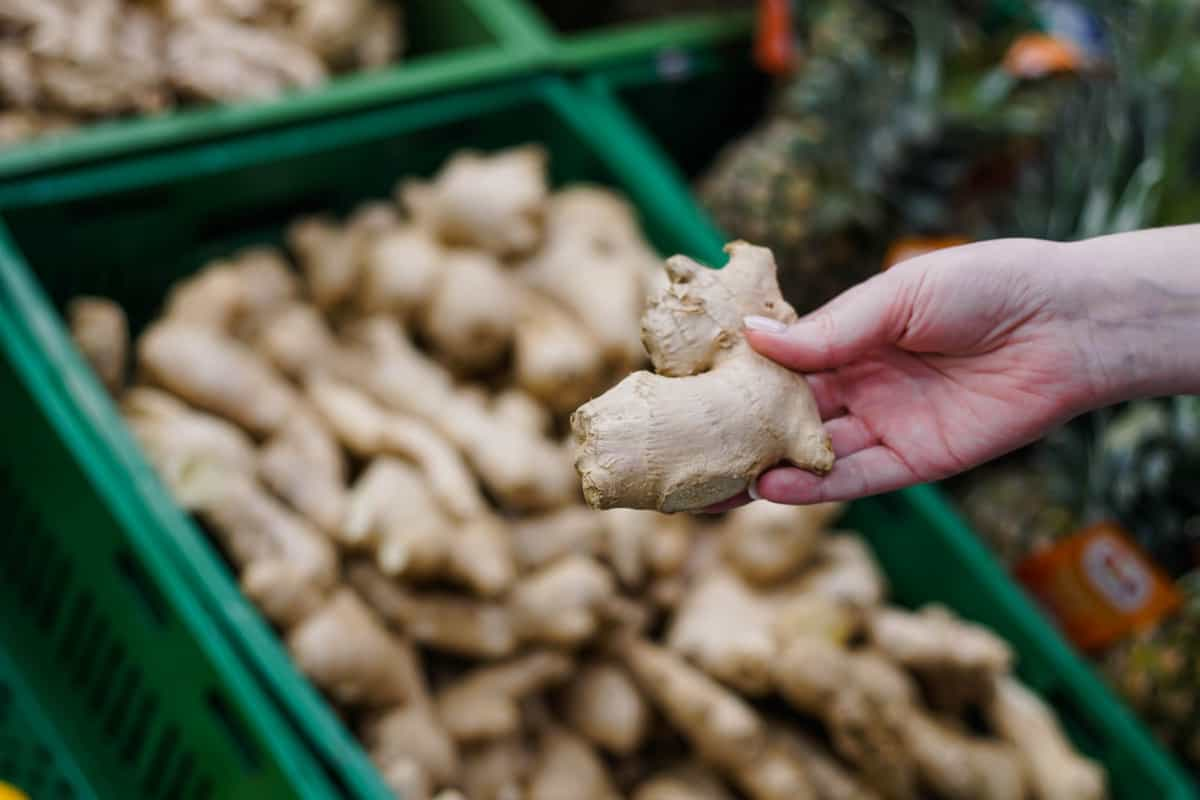
Farmers have the chance to tap into this growing trend by positioning their organic Ginger as the best product that stands out in a crowded marketplace. Moreover, adopting sustainable practices not only benefits the environment but also opens doors to certifications and partnerships with eco-conscious retailers. Organic Ginger farming can be integrated into regenerative agricultural systems that focus on restoring ecosystem health and resilience.
Staying adaptable and continuously learning about new techniques will help farmers overcome challenges while seizing opportunities in the dynamic landscape of organic Ginger farming. Organic Ginger farming offers several benefits, from promoting sustainability to producing high-quality, chemical-free Ginger. This farming approach aims to promote soil health, biodiversity, and overall ecosystem balance by avoiding harmful chemical inputs.
- Types of Pesticides Used in Agriculture: A Beginner’s Guide
- Economical Aquaculture: A Guide to Low-Budget Fish Farming
- 15 Common Planting Errors That Can Doom Your Fruit Trees
- How to Make Houseplants Bushy: Effective Tips and Ideas
- Innovative Strategies for Boosting Coconut Pollination and Yield
- Pollination Strategies for Maximum Pumpkin Yield
- The Complete Guide to Chicken Fattening: Strategies for Maximum Growth
- Natural Solutions for Tulip Problems: 100% Effective Remedies for Leaf and Bulb-Related Issues
- Revolutionizing Citrus Preservation: Towards a Healthier, Greener Future
- Natural Solutions for Peony Leaf and Flower Problems: 100% Effective Remedies
- Maximizing Profits with Avocado Contract Farming in India: A Comprehensive Guide
- Natural Solutions for Hydrangea Problems: 100% Effective Remedies for Leaf and Flowers
- The Ultimate Guide to Choosing the Perfect Foliage Friend: Bringing Life Indoors
- From Sunlight to Sustainability: 15 Ways to Use Solar Technology in Agriculture
- The Ultimate Guide to Dong Tao Chicken: Exploring from History to Raising
- The Eco-Friendly Makeover: How to Convert Your Unused Swimming Pool into a Fish Pond
- Mastering the Art of Delaware Chicken Farming: Essentials for Healthy Backyard Flocks
- 20 Best Homemade Fertilizers for Money Plant: DIY Recipes and Application Methods
- How to Craft a Comprehensive Free-Range Chicken Farming Business Plan
- Brighten Your Flock: Raising Easter Egger Chickens for Beauty and Bounty
- How to Optimize Your Poultry Egg Farm Business Plan with These Strategies
- Subsidy for Spirulina Cultivation: How Indian Government Schemes Encouraging Spirulina Farmers
- Ultimate Guide to Raising Dominique Chickens: Breeding, Feeding, Egg-Production, and Care
- Mastering the Art of Raising Jersey Giant Chickens: Care, Feeding, and More
- Ultimate Guide to Raising Legbar Chickens: Breeding, Farming Practices, Diet, Egg-Production
- How to Raise Welsummer Chickens: A Comprehensive Guide for Beginners
- How to Protect Indoor Plants in Winter: A Comprehensive Guide
- Ultimate Guide to Grow Bag Gardening: Tips, Tricks, and Planting Ideas for Urban Gardeners
- Guide to Lotus Cultivation: How to Propagate, Plant, Grow, Care, Cost, and Profit
- Agriculture Drone Subsidy Scheme: Government Kisan Subsidy, License, and How to Apply Online
- Ultimate Guide to Raising Araucana Chickens: Breed Profile, Farming Economics, Diet, and Care
- Bringing Hydroponics to Classroom: Importance, Benefits of Learning for School Students
- Ultimate Guide to Raising Polish Chickens: Breed Profile, Farming Economics, Diet, and Care
- Ultimate Guide to Raising Australorp Chickens: Profile, Farming Economics, Egg Production, Diet, and Care
- Silkie Chicken Farming: Raising Practices, Varieties, Egg Production, Diet, and Care
- Sussex Chicken Farming: Raising Practices, Varieties, Egg Production, Diet and Care
I have 25 acres farm in bhandara (nagpur) and i want to grow ginger. I need some help in ginger farming.
Check whether Ginger has good market price. If it is first time, don’t cultivate 25 acres at a time unless you know very well of farming practices. visit nearest other farmer sites. You should have proper plan which includes all the investments and crop management practices including marketing. I suggest start with small scale may be in a acre or so..eventually, based on your out put increase the farming area. Profits depends on many factors like soil type, climate, irrigation, your interest, and other cultivation practices. Good luck!.
Where does Hawaiian ginger originated?
The Kahili Ginger on Hawaii was introduced to the Hawaiian islands from eastern India in early nineteenth century.
I wish to do the farming of Ginger in Tamil Nadu area. Which will be the right place for cultivation in TN. What would be the export potential/ feasibility to do dried ginger export from India. ?
It’s a good idea. Definitely Ginger has good demand in both forms. However, you should have marketing channel before starting a commercial Ginger farming.
Hi sir, I am Shivanand,
I want to cultivate ginger in Karnataka state Belagavi district is this area suitable for it an which variety is suitable for this land ?
SIR I want to speak to you regarding GINGER CULTIVATION.How much money is required to develop 11 acres land?.Total labour required —etxr
Sir, ginger crop suitable black soil in kadapa district, ap.
I am having land in hosakote bangalore rural dist. I am planning for ginger farming in may Ist werk. Is it right time. Where will i get seeds. Did i get any asdistance for farming.
Can i have a copy of this Article? Ginger Farming (Organic), Planting, Harvesting, Yield….I’m planning to plant ginger in our farm…Thank you for your kindness
Respected Sir!
we are having TWO Acres of Land Nr. Hyderabad. Our Land is red Gravely Soil. In this Land we have Planted Melia Dubia (Malabar Neem) aged 5 Years. It has grown up to 30 Feet. In this Land we can get the Sunlight up to 20% to 30%. Shall we Grow Ginger in this Shady land of 70% t0 80%.
Some of the Farmers and Scientists are informing that Ginger needs Sade and our Land is suitable for Ginger. Some People are telling that Carrot and Beetroot are better in this Shady Land.
Kindly suggest sir .We can make plantation of Ginger in the Middle/ end of August with Bore well water. Is it right t time to plant Ginger.
Kindly suggest sir which crop is suitable for our Shady Land. Good Ginger seed is available with the Farmers. On receipt of your Advise we will go for procuring the Ginger seed.
If the above THREE Plantations are not suitable in the Shady Land, kindly suggest suitable for our Shady Land. Based on your Advise we will go further
hi sir
Namaste
Your web site blogs gives more clarity on several crops
Thank you . My question is how much soil is required for one plant . is there any chance for ginger crop in vertical style of farming
I am looking for a company specialist in producing ginger to make a partnership on a plantation in Portugal, We have a good consuption of this producto and nobody is producing it in here. I am building facilities for that production but will be useful to have a knowledge partner that would like to be associated to this project. Be so kind, if really interested, to contact me. Sincerely yours, Mário
Hello,
My name is Maria, and I’m from Greece.
I’m wondering about ginger farming and I would like to try on 2 acres. So, can you please tell me where can I find ginger seed – roods to buy for planting?